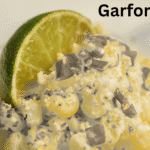For any guitarist who relies on the signature tone of an Ovation acoustic-electric guitar, a dependable Ovation to amp cable is one of the most important pieces of gear you’ll ever use. While many players focus heavily on amps, pedals, and guitar setups, very few realize that the cable connecting an Ovation guitar to the amplifier can dramatically shape clarity, tone, and performance consistency. In this guide, we explore everything you need to know—based on the latest insights—about how to select, use, and maintain an Ovation to amp cable for studio sessions, live gigs, or home practice.
Why an Ovation to Amp Cable Plays Such a Crucial Role
Ovation guitars combine advanced onboard electronics with a distinct roundback body design. This unique construction responds best when paired with a high-quality cable that preserves the natural acoustic character of the instrument. A poorly made cable can introduce static, unwanted hum, reduced volume, or tone loss. Meanwhile, a well-built Ovation to amp cable ensures:
-
Clearer signal transfer
-
Stronger output
-
Reduced interference
-
Fuller presence and definition
-
Balanced tonal response
Even the finest preamp inside an Ovation guitar cannot overcome the limitations of a cheap cable.
Understanding the Core Components of an Ovation to Amp Cable
1. Conductive Wire Quality
The heart of every cable is its conductor. The material determines how cleanly your sound travels from your guitar to the amp.
The most common conductor types include:
-
Oxygen-Free Copper (OFC): High purity, excellent for detailed tone.
-
Silver-coated copper: Offers precise brightness and articulation, often preferred by studio players.
-
Standard copper: Functional but less durable and more prone to oxidation.
For most Ovation musicians, OFC provides the best balance between price and performance.
2. Shielding Technology to Prevent Noise
Ovation guitars tend to pick up more external noise if the cable lacks proper shielding, especially when performing near stage lights, power supplies, and other electronics.
Modern shielding techniques include:
-
Braided copper shielding
-
Helical shield design
-
Aluminum foil layers
-
Conductive PVC coatings
A high-quality Ovation to amp cable typically uses a combination of two or more shields to ensure maximum protection from interference.
3. Connectors and Build Quality
The connectors (also known as plugs) are the first and last points of contact in the signal chain.
Connector options include:
-
Gold-plated connectors: Great against corrosion and ideal for humid climates.
-
Nickel connectors: Strong and affordable.
-
Professional-grade connectors (Neutrik style): Known for durability and secure fit.
Since Ovation guitars often have tight, well-designed output jacks, using a connector that fits snugly ensures consistent, drop-free signal flow.
4. Cable Length and Signal Integrity
The length of your Ovation to amp cable affects how much tone you retain.
Recommended lengths:
-
10–15 feet: For studio work or small practice areas.
-
20 feet: Ideal for live stage use with minimal loss.
-
25+ feet: Only recommended when absolutely necessary, as the longer distance can reduce brightness without proper shielding.
A shorter cable will almost always deliver the cleanest sound.
How an Ovation to Amp Cable Affects Your Tone
Tone loss is one of the most overlooked problems guitarists face. A cable with poor shielding or high capacitance can cause noticeable issues such as:
-
Dull or muddy sound
-
Weak output
-
Loss of high-frequency sparkle
-
Increased background hum
A quality Ovation to amp cable preserves the natural acoustic tone while supporting the preamp’s projection and clarity. If your guitar sounds better unplugged than plugged in, the cable is often the culprit.
Common Mistakes Guitarists Make With Ovation to Amp Cables
1. Buying Cables Based Only on Price
The cheapest cables often use low-grade copper, poor shielding, and fragile connectors. They typically fail quickly and degrade tone even when new.
2. Wrapping the Cable Incorrectly
Twisting or tightly coiling the cable can damage internal wiring. This causes crackling sounds and inconsistent signal flow.
3. Ignoring the Connector Fit
If the connector wiggles inside the guitar’s output jack, you risk cutting your signal mid-performance. This is especially risky on stage.
4. Using Cables That Are Too Long
Excess cable lying around introduces unnecessary resistance and capacitance, both of which harm tone.
Choosing the Best Ovation to Amp Cable for Your Needs
1. For Live Performers
Look for:
-
Braided shielding
-
Reinforced ends
-
20–25 ft length
-
Low-capacitance design
-
Flexible yet sturdy casing
These cables withstand movement, pulling, and repeated plugging.
2. For Recording Artists
Studio players often prefer:
-
Silver-plated conductors
-
Ultra-low-noise shielding
-
10–15 ft length
-
Gold-plated connectors
This setup delivers the cleanest, most accurate sound.
3. For Home Practice
A standard OFC Ovation to amp cable with reliable shielding in the 10–15 ft range is more than enough.
How to Properly Use and Maintain an Ovation to Amp Cable
1. Coil the Cable Using the “Over-Under” Method
This prevents internal twisting and extends the cable’s life significantly.
2. Keep Connectors Clean
Dust and oxidation reduce conductivity. Use contact cleaner every few months.
3. Store in a Dry Environment
Moisture corrodes connectors and weakens insulation.
4. Avoid Bending the Cable Near the Plug Ends
The most common failure point is the area right behind the connector.
5. Test the Cable Before Performances
A quick check can save you from embarrassing mid-show dropouts.
Signs You Need to Replace Your Ovation to Amp Cable
-
Scratchy or crackling sounds
-
Sudden volume dips
-
Intermittent signal
-
Visible cuts or kinks
-
Loose connector housings
-
Increased background hum
Even high-quality cables eventually wear out after repeated use.
Conclusion
Your Ovation guitar is capable of producing rich, expressive tone—but only if the signal traveling to your amplifier remains clear and intact. Choosing the right Ovation to amp cable is just as important as selecting an amp or setting your EQ properly. A well-built cable enhances clarity, reduces unwanted noise, and protects the full depth of your guitar’s acoustic-electric sound. Whether you’re a beginner or a seasoned performer, investing in a reliable cable and maintaining it carefully will ensure your Ovation guitar always delivers its best possible tone. With the right cable in your setup, every performance, recording session, or practice routine becomes smoother, cleaner, and far more enjoyable.
FAQs
1. Do Ovation guitars require a special type of cable?
Most Ovation guitars use a standard ¼-inch TS instrument cable, but a high-quality Ovation to amp cable designed with strong shielding will provide the best tone.
2. Why does cable length matter for Ovation guitars?
Longer cables increase capacitance, which can dull high frequencies and reduce clarity. A shorter cable keeps your tone clean and bright.
3. Are gold-plated connectors worth buying?
Yes—gold resists corrosion better than nickel and maintains a strong connection over time, especially useful for live performers.
4. What is the best cable length for home use?
A 10–15 ft Ovation to amp cable is ideal for home practice, offering excellent clarity with minimal signal loss.
5. How often should I replace my guitar cable?
With proper care, a quality cable can last many years. Replace it when you notice crackling, interference, or visible damage.









